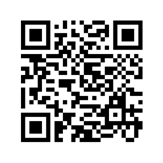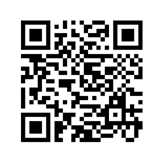Over the last few days, we’ve been exploring QR codes and trying to think of applications for these codes for our LMS and learning in general. Thought I’d share some of our thoughts on this cool technology.
What are QR codes?
A quick response (QR) code is a two-dimensional bar code that can be read on devices such as a mobile device (camera phone) or a laptop computer and which, once accessed, will allow you to complete an action – for instance, reading some text, accessing a web site or texting a number. The code itself is designed to be decoded at high speed. At this time, QR codes are most popular in Japan, where they are being used for a wide variety of applications.
For example, the QR code shown below embeds my contact details. If you are equipped with a camera phone (chances are, you have one around), it’s capable of reading this code.
To do that, you need a reader application on your device. Download a reader to your camera phone from kaywa. You can check if your phone is supported. There are other readers out there, but we like Kaywa
Fire up your reader, and scan the code. You should probably see my contact details now!
Here’s a video from YouTube that gives shows how it works.
Here are some more examples for you to try:
|
 |
|
 |
|
 |
Applications in Learning
Thinking along these lines of application for our LMS, it’s apparent that QR codes link the physical world with the virtual world. They are also about making it easier to communicate using phone numbers, text messages, and email.
QR codes have some potential as technology to assist learning. Our initial thoughts point to a few applications:
1. Tag physical learning resources – this is the most obvious application. Use the codes to tag guides, assessments, answer sheets, training rooms, laboratories, etc. in such a way that the LMS is able to start tracking real-world resources. This involves a two-way linkage.
a. The LMS must generate the codes initially to physically tag resources.
b. Users of those resources use the codes to update information required to track and monitor those resources in the LMS. They generally do this using hand-held readers (typically, the ubiquitous camera phone), and report data back to the LMS. This reporting back may take the form of a web-link that’ll provide the interface required for the update.
2. Tag objects in the environment – this is another obvious application. Use QR codes to tag objects in the environment that might possibly need training to operate or use.
Example: You encounter a phone conferencing system you haven’t used; look for the QR code on the device that links up to the learning module for that hardware. Scan the code, and the LMS assigns you a mobile learning module for that hardware, in this case the conferencing system. The training is then available to you just-in-time.
3. Embed micro training – just a possibility. If instructions about the use of objects in the environment are tiny, they could be contained within the tag itself, without requiring any kind of LMS interfaces to deliver that training. This idea might lend itself well to large pieces of equipment.
Example: A tractor, whose large parts are tagged with service/replacement instructions for that part and with a link to technical information about that part. The user would just scan the code to find out the bare minimum – what the replacement part is and where they can find it. This is also more in line with the conventional way QR codes are used in manufacturing and inventory applications.
4. Alternate Reality Games – ARGs can benefit immensely from the use of QR codes. We especially consider the ability to embed contact, geo location, and URL information in these codes very useful, since typical elements in ARGs depend on these information types for furthering game-play.
What do you think about QR codes? Any other extensions or applications you can think of from a learning technology perspective? Add your thoughts to the comments.














